Refrigerator pickles have just the right amount of salty, tangy goodness with the most perfect crunch. You are going to love making pickles at home!
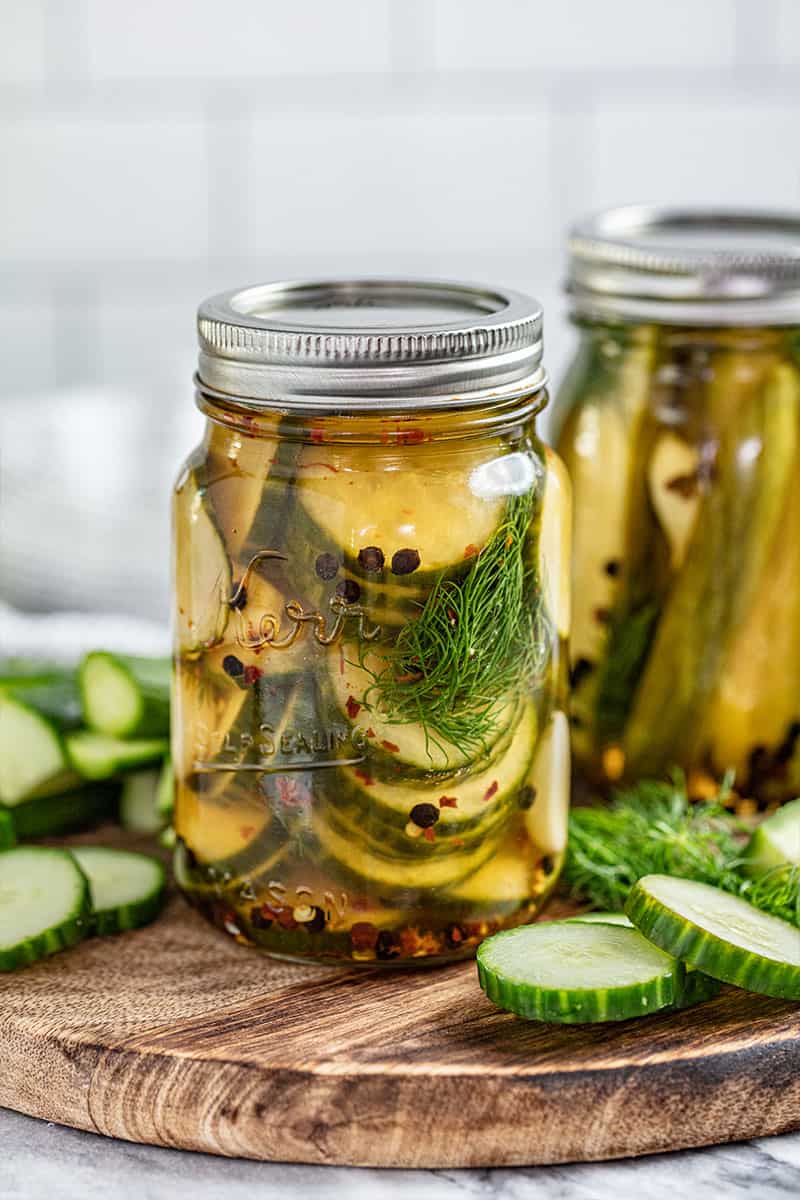
Pickles are for more than just midnight cravings of pregnant women, everybody loves pickles! And like most things, they are so much better when made at home! Don’t feel intimidated here, making pickles is so quick and easy. You’ll never reach for that store-bought jar again!
History Lesson: Pickles date back thousands of years, when pickling was the best way to preserve food. You might immediately think of cucumbers when talking about pickles, but practically any vegetable can be pickled!
Cucumber Options for Pickling:
Regular Cucumbers are the standard cucumbers you see at the grocery store that are short and wide and may even have a waxy coating on them to make them look good on the shelves. These have larger seeds and a higher water content.
English Cucumbers are often covered in plastic wrap to better preserve them on the shelves since they do not have a wax coating. They have a sweeter taste, and while they still have seeds, they are tiny with a much lower water content, making them perfect for refrigerator pickles!
Pickling Cucumbers are tailor made to pickle. While they can be eaten fresh from the garden, their thin skin and extra crunchy flesh make them ideal for pickling. You may have a difficult time finding these in store.
If you are having a hard time finding English or Pickling cucumbers, you can even use mini cucumbers!
Bread and Butter Pickles
Love Bread and Butter pickles? No problem! It’s easy to alter this dill pickle recipe to the bread and butter variety. Simply replace 1/2 cup of the white vinegar with apple cider vinegar. Then, instead of adding in black peppercorns, garlic, and dill you’ll flavor the pickles with:
- 1 inch cinnamon stick
- 1 teaspoon whole mustard seeds
- 6 allspice berries
- 6 whole cloves
- 1/2 teaspoon ground turmeric
In Defense of Sugar:
While it is true that you can do without the sugar in the sense of food safety, we don’t recommend it. When used in pickling, sugar helps to preserve the texture as well as balance out the tartness in this level of acidity.
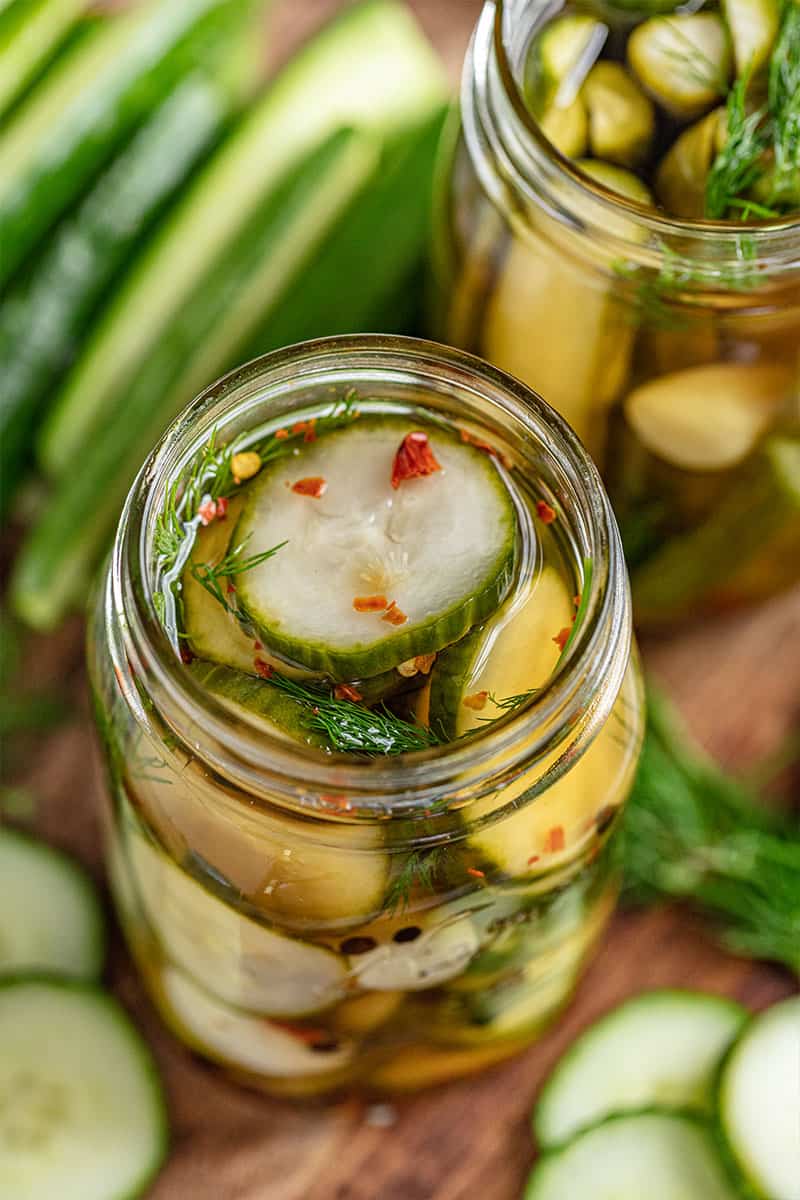
Canning Instructions:
If you want to can your pickles, you may want to make a much larger batch.
Fill sterilized pint-sized canning jars with pickles and brine, leaving a 1/2 inch of headspace. Be sure to wipe the rim clean and seal with a canning lid and ring. Do not overtighten. Place into a large stockpot for canning. Fill the pot to cover the tops of the jars with at least 1 inch of water and process in a water bath for 15 minutes (higher elevations and/or larger jars will need a longer processing time).
Carefully remove the jars from the water bath and let sit out on the counter undisturbed for 24 hours. You should hear a ping from each jar as they seal. After 24 hours, check to make sure the jars have sealed correctly by lightly pressing the top of the lid. If the center bubbles up and down when you press it, is has not sealed and needs to either be refrigerated or reprocessed. If the lid is firm, the jar is properly sealed and can be stored in the pantry.
If you like this recipe, you may be interested in these other delicious recipes:

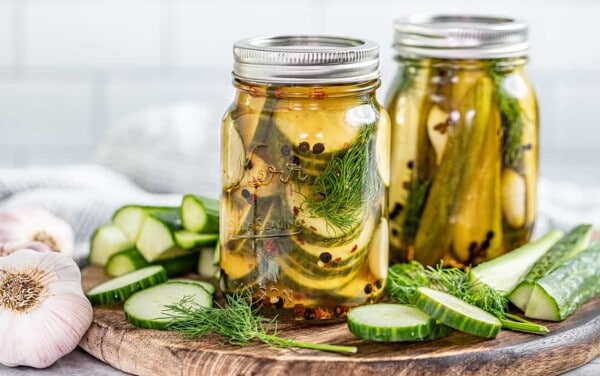
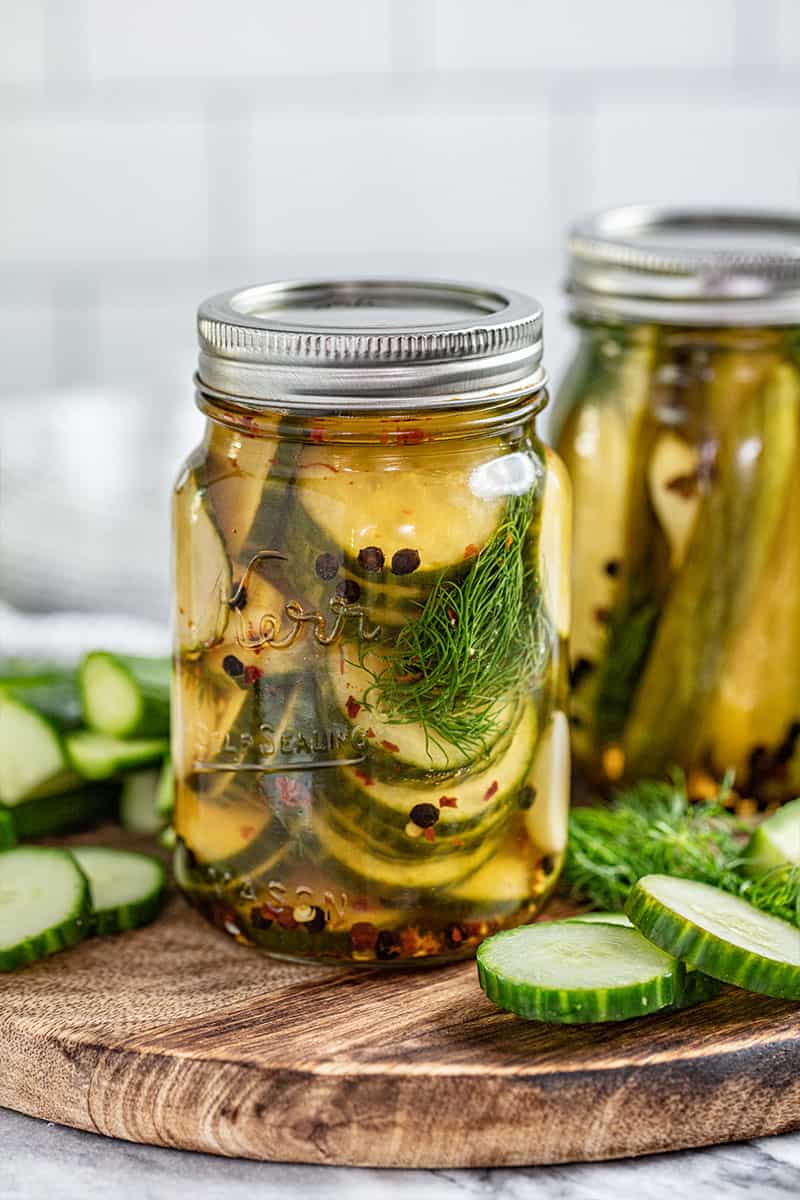
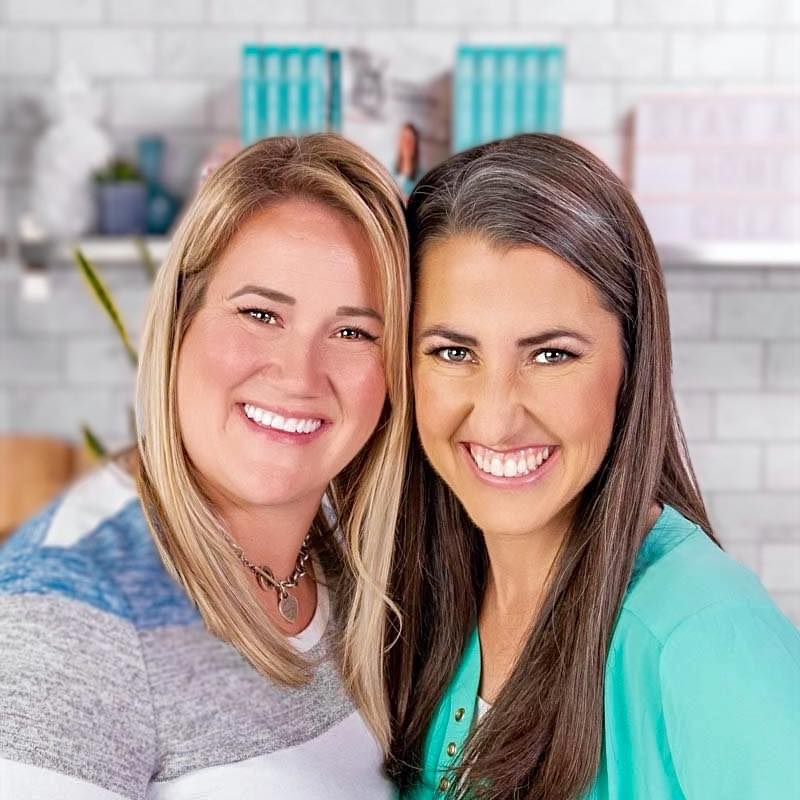
My garden was bursting at the scene with English cucumbers that I needed to do something with when I came across this recipe. I tripled the recipe X 2; one being made exactly as written & the other using less vinegar, substituting water. I also added dill weed in addition to the dill sprigs. Have to admit I was a tad worried when cooking the vinegar solution. My eyes were burning from the fumes & the smell reminded me of…well, if an old smelly teenage boy’s sneakers that he wore with no socks during gym class the entire school year had a scent, this would be it. I used to can pickles decades ago & never had this experience. So, after sitting a few days in the fridge I just opened the full strength one….sooo good. Brought me back to childhood and stopping by a Jewish deli in New York City with my grandmother. I loved the dill pickles that were kept in the wooden barrels. To me it set the stage to appropriate pickledom. These refrigerator pickles taste like that. Happy dance!
This is by far the best pickle recipe I’ve found! I’ve tried so many that have claimed to be the best and have been disappointed so many times. This is definitely one I’ll make over and over again ❤️